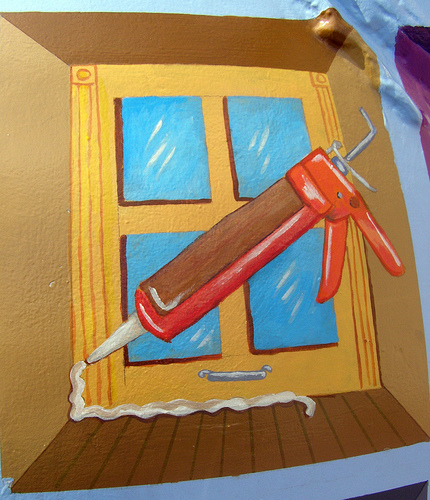 As my family and co-workers will readily attest, I looked forward to my energy audit with disturbing anticipation after I made the appointment about a month ago. I was nearly giddy at the thought of having all my energy-efficiency questions answered: Should I replace my windows? Insulate? Wrap my water heater? Were there huge drafts in my basement that I didn’t know about?
As my family and co-workers will readily attest, I looked forward to my energy audit with disturbing anticipation after I made the appointment about a month ago. I was nearly giddy at the thought of having all my energy-efficiency questions answered: Should I replace my windows? Insulate? Wrap my water heater? Were there huge drafts in my basement that I didn’t know about?
It was a bit like waiting for a first date with someone who came highly recommended. Only with the promise of lower utility bills instead of … well. Other things.
I was sure this guy would have answers. But there were a few things I didn’t know.
For one thing, I didn’t know he’d look like Wade Boggs. (To baseball fans of a certain age: Aw yeah! Ol’ chicken-chomping panty-lover himself! To everyone else: You had to be there.) I also learned a few other things during the two hours he spent in my drafty house.
1. Utilities are generous … to a point. When I wrote my post about replacing windows, some readers suggested an energy audit first. I was daunted by the cost, which can be a few hundred dollars, but I discovered that my utility offers free audits through a third-party company. Sweet. This is true in many, many places, and you should see if it’s true in your town — and then, if you can, find out just what services they cover. Because the auditor pointed out something that makes sense, but that I hadn’t really thought about: Utilities can choose how fancy an audit they feel like subsidizing. I think in my case, it was a pretty bare bones version — down to the basement, up to the attic, measure the windows, squint at things, crunch some numbers. But a utility in a nearby town, the auditor told me, has shelled out for infrared scans for any customer. Others subsidize the blower door test, a sort of whole-house draft detector that I now covet.
2. Infrared offers insights … sometimes. The auditor said infrared scans — which show how much energy a house is losing, and where — are really only useful in a very warm or very cold situation, when the difference between the inside and outside temperatures is enough to register. I can’t confirm this elsewhere, though it sounds logical enough. Science types, please feel free to weigh in.
3. The ol’ “wrap your hot-water heater” tip is out of date. Most heaters are now built with insulation, but some still need that extra love. So how can you tell whether you need to take this step? According to the feds, if your hot-water heater is warm to the touch, it needs to be insulated, and a blanket or jacket can be had for a measly $10 to $20. Either way, keeping it set at 120 (or lower, if you can hack it) will save energy and money.
4. Commercial building managers overlook the obvious. My auditor said he does more commercial than residential audits, and that the companies he visits still need to make really simple, but cost-effective, changes — things like not running the air conditioning all weekend, or turning the lights out when no one’s in the building. Green walls may be more fun, but corporate America could make big gains just by flipping off the lights.
4.5. I have work to do. The good news is, my fella and I just took the plunge and insulated our attic, after two years of muttering about it. But now we need to insulate the basement. Get the furnace inspected, and possibly replaced. Add insulation to the walls (ulp). And do something about those windows.
I spend much of my time at Grist editing columns and videos that cheerily advise our users to take all these steps. But actually doing it? That’s a house of a different color.



